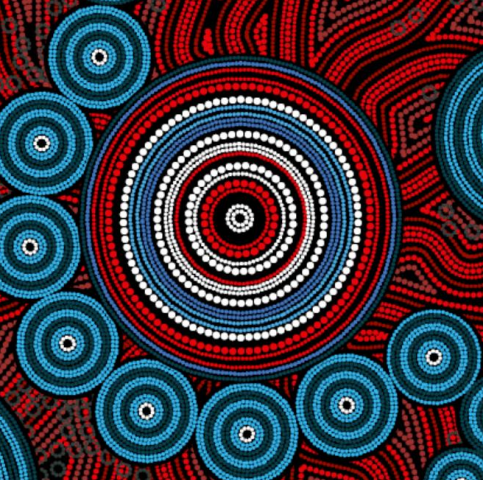
Women Exiting the Corrections System
In 2018 Synapse partnered with the NSW Department of Justice and Guthrie House, a not-for-profit transitional service for women exiting the prison system, to support women who may have a brain injury.
Read moreIt is well known that there is an over representation of young people impacted by brain injury and fetal alcohol spectrum disorder (FASD) involved with the child protection and justice systems (Chistabesan et al., 2015; Indig et al., 2011; Passmore et al., 2018). Overlaps are evident between young people engaged with youth and family services, substance misuse, homelessness, mental health problems, and experiences of violence. These factors may increase the likelihood of a brain injury or result from a brain injury. For example, 1 in 3 young people under youth justice supervision receive treatment for alcohol and other drug use (AIHW, 2018), which increases risks of brain injury.
Another overlap relates to experiences of violence. Many young people who enter the youth justice system have experienced domestic and family violence, often resulting in out-of-home-care placements (Baldry et al., 2017; Farrer, Frost & Hedges, 2013). 2018 Victorian statistics have shown that thirty-one percent of family violence victims were children under the age of 15, and 25% of these children sustained a brain injury (Brain Injury Australia., 2018). Of the 261 children admitted to New South Wales’ Brain Injury Rehabilitation Program during 2006-2007, seven per cent had acquired their brain injury due to assaults resulting from domestic violence (AIHW, 2008). It is important to consider the links between brain injury and violence both in terms of offending behaviours and risk of sustaining a brain injury.
Research supports the value of screening young people engaged with child protection and justice systems for brain injury to allow for more tailored interventions (Hughes et al., 2012; Vaughn et al., 2014). Synapse is partnering with youth and family services to develop processes for identifying and supporting marginalised young people with brain injury and cognitive disabilities.
AIHW (2008). [Australian Institute of Health and Welfare] Australian hospital statistics 2006-07, Australian Institute of Health and Welfare, Canberra, 2008
AIHW (2018). [Australian Institute of Health and Welfare] Overlap between youth justice supervision and alcohol and other drug treatment services 2012–16. Cat. no. JUV 126. Canberra: AIHW
Baldry, E., Briggs, D. B., Goldson, B., & Russell, S. (2017). ‘Cruel and unusual punishment’: an inter-jurisdictional study of the criminalisation of young people with complex support needs. Journal of Youth Studies, 1-17. doi:10.1080/13676261.2017.1406072
Brain Injury Australia (2018). The prevalence of acquired brain injury among victims and perpetrators of family violence. Report commissioned by the Victorian Government Department of Health and Human Services
Chitsabesan, P., Lennox, C., Williams, H., Tariq, O., & Shaw, J. (2015). Traumatic Brain Injury in Juvenile Offenders: Findings From the Comprehensive Health Assessment Tool Study and the Development of a Specialist Linkworker Service. Journal of Head Trauma Rehabilitation, 30(2), 106-115. doi:10.1097/HTR.0000000000000129
Farrer, T. J., Frost, R. B., & Hedges, D. W. (2013). Prevalence of traumatic brain injury in juvenile offenders: A meta-analysis. Child Neuropsychology, 19(3), 225-234. doi:10.1080/09297049.2011.647901
Hughes, N., Williams, H., Chitsabesan, P., Davies, R., and Mounce, L. (2012). Nobody made the connection: The prevalence of neurodisability in young people who offend. London: Office of the Children’s Commissioner.
Indig, D., Vecchiato, C., Haysom, L., Beilby, R., Carter, J., Champion, U., Gaskin, C., et al. (2011). 2009 NSW Young People in Custody Health Survey: Full Report. Sydney: Justice Health and Juvenile Justice.
Passmore, H. M., Giglia, R., Watkins, R. E., Mutch, R. C., Marriott, R., Pestell, C., . . . Bower, C. (2016). Study protocol for screening and diagnosis of fetal alcohol spectrum disorders (FASD) among young people sentenced to detention in western australia. BMJ Open, 6(6), e012184. doi:10.1136/bmjopen-2016-012184
Vaughn, M. G., Salas‐Wright, C. P., DeLisi, M., & Perron, B. (2014). Correlates of traumatic brain injury among juvenile offenders: A multi‐site study. Criminal Behaviour and Mental Health, 24(3), 188-203. doi:10.1002/cbm.1900

In 2018 Synapse partnered with the NSW Department of Justice and Guthrie House, a not-for-profit transitional service for women exiting the prison system, to support women who may have a brain injury.
Read more
In 2018-2019 Synapse partnered with the Brisbane Murri Court to complete a pilot project in response to the need for culturally safe screening for brain injury and complex disability in the Murri Court system.
Read more
Our Information & Referral team provides specialist information and advice to help manage the impacts of brain injury and better navigate the systems of available care and support.
Read more
Advocacy services for you or someone you care for to ensure that rights, interests and needs are upheld across a range of disability systems and services.
Read more
Synapse delivers unique training to help you, and your team, better understand the needs of people impacted by brain injuries.
Read moreIf you’ve got questions or need advice, support or further information, get in touch with us today. We’d love to help